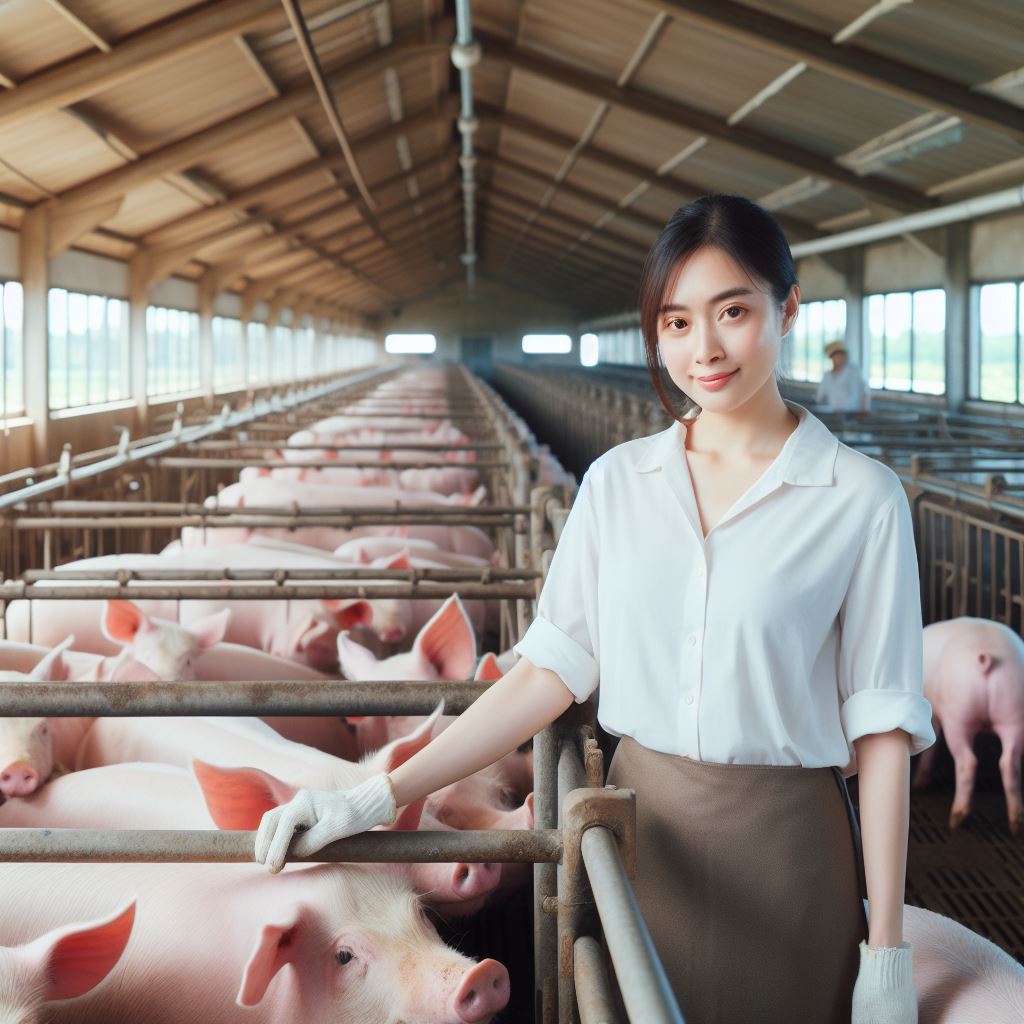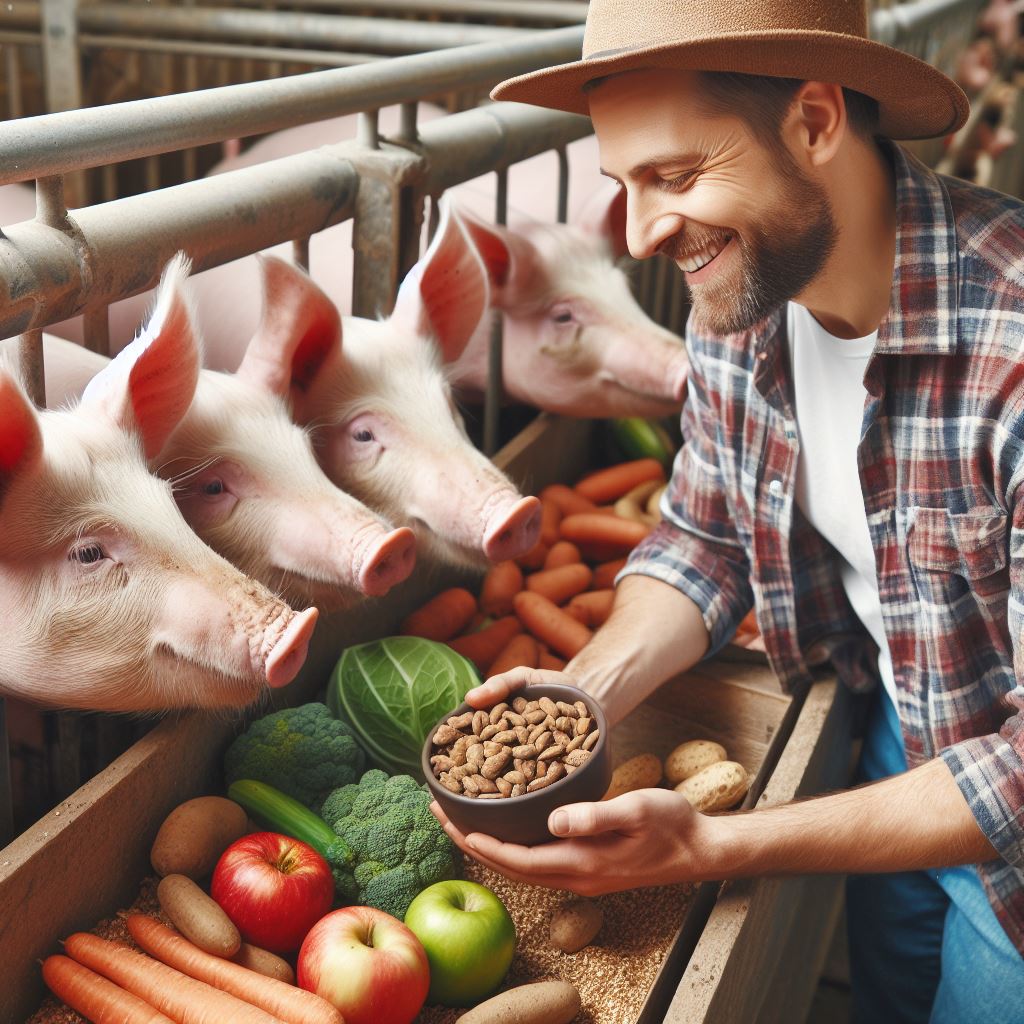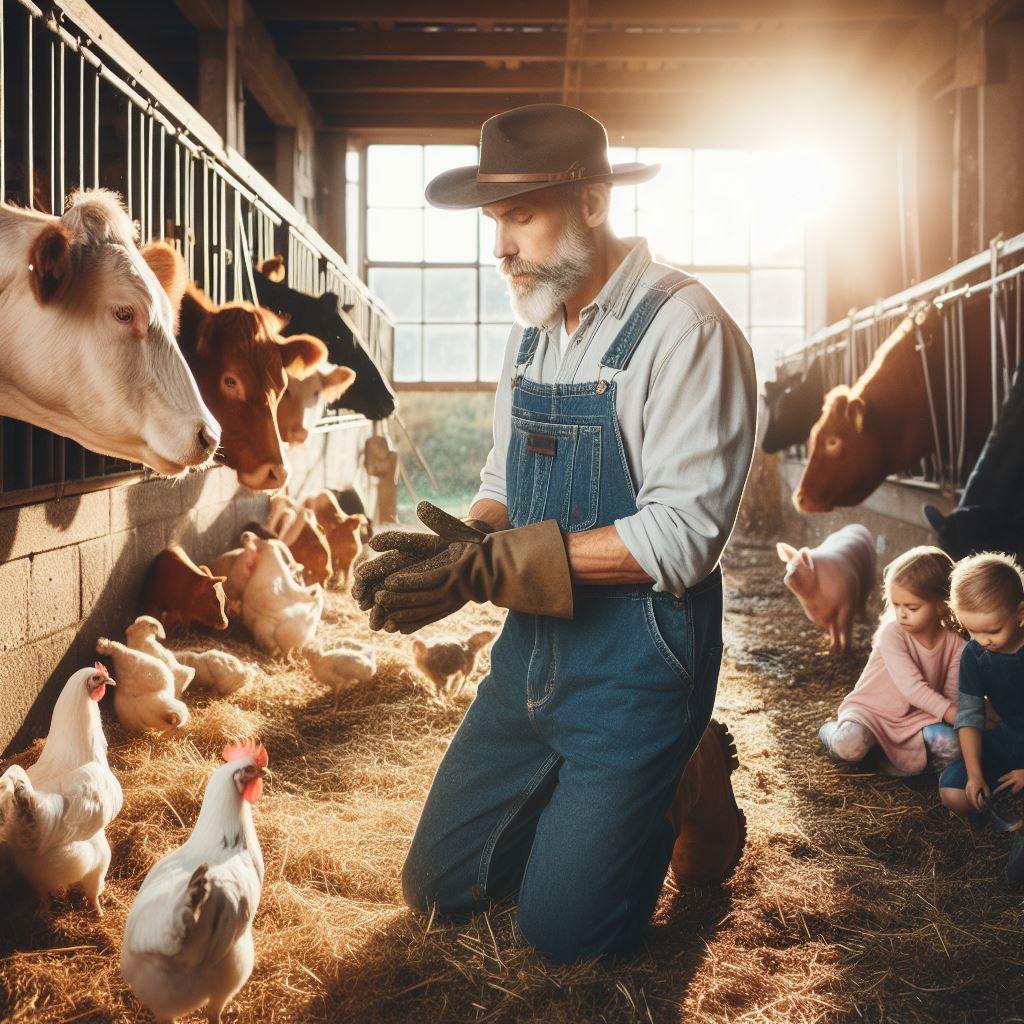Introduction
A. Importance of pig housing solutions
Pig housing solutions play a crucial role in ensuring the welfare and productivity of pigs.
Well-designed facilities provide climate control, disease prevention, and efficient space utilization, ensuring pig health and productivity.
Implementing proper housing contributes to higher-quality pork production, improved animal welfare, and overall sustainability in the pig farming industry.
B. Overview of the blogpost’s content
This blogpost aims to provide an overview of effective pig housing solutions and their importance.
Ensuring the well-being of pigs relies significantly on effective housing solutions, creating a comfortable and suitable environment that enhances their overall health and productivity.
This blogpost aims to comprehensively explore various aspects crucial to successful pig housing.
A fundamental consideration in pig housing is space.
Adequate room for movement and natural behaviors like rooting and exploring is essential.
Overcrowding can lead to aggression, stress, and increased disease risk, underscoring the importance of providing ample space for pigs to thrive.
Ventilation emerges as another critical factor.
Proper air circulation maintains optimal air quality, eliminating harmful gases like ammonia.
Good ventilation not only prevents respiratory issues but also reduces stress levels, contributing to healthier pigs and improved performance.
Temperature control is equally vital.
Pigs are sensitive to temperature fluctuations, and extremes can impact their health and productivity.
Implementing insulation, ventilation, and temperature monitoring systems ensures a comfortable environment year-round, promoting the well-being of the pigs.
Transform Your Agribusiness
Unlock your farm's potential with expert advice tailored to your needs. Get actionable steps that drive real results.
Get StartedHygiene plays a pivotal role in pig housing.
Regular cleaning and disinfection prevent disease spread, while efficient waste management minimizes odors and prevents manure accumulation.
These practices collectively contribute to maintaining a healthy environment for the pigs.
In essence, effective pig housing solutions encompass providing adequate space, ensuring proper ventilation, implementing temperature control measures, and maintaining hygiene standards.
Subsequent sections of this blog will delve deeper into each aspect, offering insights to help pig farmers implement optimal housing solutions for their animals.
Common Challenges in Pig Housing
Effective Pig Housing Solutions are essential for the overall well-being and productivity of pigs.
However, there are several challenges that pig farmers commonly face when it comes to housing their animals.
These challenges can have a significant impact on the health and growth of the pigs, as well as the efficiency of the farm operations.
In this section, we will discuss some of the common challenges and the importance of addressing them.
A. Lack of Space
One of the primary challenges in pig housing is the lack of adequate space for the animals.
Pigs require sufficient space to move around, exercise, and express their natural behaviors.
When pigs are overcrowded, they become stressed, which can lead to aggression, injuries, and reduced growth rates.
B. Poor Ventilation
Another critical challenge is poor ventilation in pig housing facilities.
Proper airflow is essential to remove moisture, heat, and odors from the environment.
Inadequate ventilation can result in high humidity levels, which create a favorable environment for the growth of pathogens and respiratory diseases.
It can also lead to heat stress, affecting the overall health and performance of the pigs.
C. Inadequate Flooring
The type and quality of flooring in pig housing play a crucial role in pig welfare and productivity.
Inadequate flooring can lead to injuries, lameness, and joint problems.
Slippery floors may cause falls and increase the risk of fractures.
Additionally, unsuitable flooring can also contribute to poor hygiene and difficulties in waste management.
D. Inefficient Waste Management
Waste management is a significant challenge in pig housing systems.
Accumulation of manure and urine can result in ammonia buildup, which can negatively affect the air quality and respiratory health of the pigs.
Improper waste management can also lead to the contamination of water sources and the spread of diseases.
To overcome these common challenges, pig farmers must consider implementing effective housing solutions.
Showcase Your Farming Business
Publish your professional farming services profile on our blog for a one-time fee of $200 and reach a dedicated audience of farmers and agribusiness owners.
Publish Your ProfileHere are some key strategies that can help address these issues:
E. Increase Space Allocation
Providing adequate space for each pig will promote better welfare and reduce the risk of aggression and injuries.
Farmers must ensure that the housing facilities allow pigs to move freely and engage in their natural behaviors.
F. Improve Ventilation Systems
Investing in proper ventilation systems can greatly improve air quality and reduce humidity levels.
This can be achieved by installing fans, air vents, or cooling systems that provide adequate airflow throughout the facility.
G. Optimize Flooring Conditions
Choosing suitable flooring materials and designs is essential for pig welfare.
Non-slip flooring with appropriate traction can reduce the risk of injuries, while also facilitating waste management and hygiene practices.
H. Implement Effective Waste Management Practices
Developing and implementing efficient waste management systems is crucial for maintaining a healthy environment for the pigs.
Regular removal of manure and proper storage or treatment of waste will help minimize odor, ammonia levels, and disease transmission.
By addressing these common challenges, pig farmers can create a healthier and more productive housing environment for their animals.
It requires careful planning, investment, and ongoing monitoring to ensure that the housing solutions are properly implemented and maintained.
Ultimately, prioritizing effective pig housing solutions will lead to happier, healthier pigs and more sustainable farm operations.
Read: Biosecurity in Livestock Farms: Key Practices
Types of Pig Housing Solutions
When it comes to effectively housing pigs, there are various options available.
Two common types of pig housing solutions are conventional indoor housing and outdoor housing.
Both have their advantages and disadvantages.
A. Conventional indoor housing
Advantages
- Provides better control over environmental factors such as temperature, ventilation, and lighting.
- Offers protection from extreme weather conditions, reducing the risk of pig health issues.
Disadvantages
- Limited space may restrict the pigs’ natural behavior, impacting their welfare and overall well-being.
- Requires more investment in infrastructure, including climate control systems and waste management.
B. Outdoor housing
Advantages
- Allows pigs to exhibit natural behaviors such as rooting and grazing, promoting their mental and physical stimulation.
- Provides ample space and access to fresh air, which can contribute to better pig health and reduced stress.
Disadvantages
- Exposes pigs to unpredictable weather conditions, which can increase the risk of diseases and health problems.
- Requires suitable fencing and shelters to protect pigs from predators and ensure their safety.
Selecting the ideal pig housing hinges on factors like farm size, climate, and pig requirements.
Farmers must weigh each option’s pros and cons for an informed choice.
Conventional indoor housing ensures environmental control, shielding pigs from harsh weather and health risks.
However, it may restrict natural behaviors, causing stress. Infrastructure investments are substantial.
Outdoor housing encourages natural behaviors, enhancing welfare and health, but exposes pigs to weather challenges and disease risks.
Thoughtful consideration of these factors, along with the farm’s specifics, is crucial.
Striking a balance between environmental control and natural behaviors ensures an optimal pig housing solution.
Read: Innovative Manure Management Tools and Tips
Innovative Pig Housing Solutions
A. Deep-bedded systems
- Deep-bedded systems provide comfortable and natural bedding for pigs, enhancing their well-being.
- Pigs in deep-bedded systems experience reduced stress levels, improved health, and increased productivity.
- Examples of successful deep-bedded systems include the use of straw, wood shavings, or recycled organic materials.
B. Pasture-based systems
- Pasture-based systems allow pigs to roam freely in outdoor areas, mimicking their natural behavior.
- These systems offer numerous benefits such as exercise, access to natural forage, and reduced aggression among pigs.
- Challenges in implementing pasture-based systems include the need for adequate space, fencing, and predator protection.
- However, the environmental advantages, including improved soil health and reduced water pollution, outweigh the challenges.
Essentially, Innovative pig housing solutions, such as deep-bedded and pasture-based systems, provide significant benefits for both pigs and farmers.
These systems improve pig welfare, enhance productivity, and have positive environmental impacts.
While there are challenges in implementing these solutions, the success stories and long-term advantages make them worthwhile investments for the future of pig farming.
Read: Top 2024 Livestock Health Monitoring Gadgets
Factors to Consider when Implementing Pig Housing Solutions
A. Animal welfare
- Providing adequate space is crucial for the well-being and comfort of pigs.
- Ensuring proper ventilation and temperature control is essential to prevent heat stress or hypothermia.
- The design of housing should consider natural behaviors of pigs, such as rooting and social interaction.
- Regular monitoring and adjustment of housing conditions can help prevent injuries and stress in pigs.
- Access to clean water, nutritious feed, and proper waste management are vital for maintaining animal health.
B. Health and disease prevention
- Proper housing design and layout can help minimize the risk of disease transmission among pigs.
- Separating different age groups and sick animals from the healthy ones can prevent the spread of pathogens.
- Maintaining a clean and hygienic environment, including regular disinfection, reduces the likelihood of disease outbreaks.
- Adequate drainage systems and proper waste management are necessary to prevent the accumulation of pathogens.
- Regular veterinary care and vaccination protocols should be implemented to ensure pig health.
C. Cost and infrastructure requirements
- Consideration of the initial investment and ongoing expenses related to different pig housing solutions is essential.
- Evaluating the size and scalability of the operation is important for determining the appropriate housing infrastructure.
- Choosing cost-effective materials that are durable and easy to clean can help reduce long-term maintenance costs.
- Efficient utilization of space and design to accommodate the required number of pigs is crucial for cost optimization.
- Proper planning and budgeting for construction, equipment, and ongoing operational costs should be taken into account.
D. Regulatory compliance
- Compliance with local and national regulations related to pig housing is necessary to avoid legal issues and fines.
- Familiarizing oneself with zoning restrictions, building codes, and animal welfare requirements is crucial.
- Consulting with regulatory authorities or experts in the field can help ensure compliance with all necessary regulations.
- Regular monitoring and documentation of housing conditions can demonstrate compliance if inspections occur.
- Staying informed about any regulatory changes or updates is essential to adapt housing practices accordingly.
Overall, implementing effective pig housing solutions requires careful consideration of factors such as animal welfare, health and disease prevention, cost and infrastructure requirements, and regulatory compliance.
Ensuring the well-being of pigs, preventing diseases, optimizing costs, and meeting regulatory standards are crucial for successful pig housing implementation.
Read: Poultry Farming: Dealing with Predators

Case Studies of Effective Pig Housing Solutions
A. Niman Ranch Hog Farm: Improved barn design and ventilation
Niman Ranch Hog Farm implemented a barn design that focuses on improving pig welfare and productivity.
They integrated a ventilation system that ensures optimal air quality and temperature control.
The barn design maximizes natural light and utilizes curtain sidewalls for adequate ventilation.
Niman Ranch Hog Farm prioritizes the comfort and well-being of their pigs, resulting in improved growth rates and health.
B. Hog Slat, Incorporated: Outdoor pasture-based system
- Hog Slat, Incorporated adopts an outdoor pasture-based system that allows pigs to roam freely.
- The pigs have access to a large grazing area, providing them with plenty of space to exercise.
- This system meets the pigs’ natural behavioral needs and enhances their overall welfare.
- Outdoor pasture-based systems also minimize the need for artificial heating and ventilation, leading to cost savings.
C. Prestage Farms: Deep-bedded system with waste management innovations
- Prestage Farms utilizes a deep-bedded system that offers pigs a comfortable and natural environment.
- This system incorporates deep straw bedding, which promotes rooting and natural pig behaviors.
- Prestage Farms also implemented waste management innovations such as composting and anaerobic digestion.
- These innovations enable the farm to efficiently handle manure and reduce environmental impacts.
Essentially, Effective pig housing solutions are crucial for ensuring the welfare and productivity of pigs.
These case studies highlight various approaches that have proven successful in providing optimal housing conditions.
Niman Ranch Hog Farm’s improved barn design and ventilation system prioritize pig welfare and productivity.
By focusing on air quality and temperature control, they create a comfortable environment that positively impacts pig health and growth rates.
Hog Slat, Incorporated takes a different approach with their outdoor pasture-based system.
Showcase Your Farming Business
Publish your professional farming services profile on our blog for a one-time fee of $200 and reach a dedicated audience of farmers and agribusiness owners.
Publish Your ProfileAllowing pigs to roam freely in a large grazing area not only fulfills their natural behavioral needs but also eliminates the need for artificial heating and ventilation, resulting in cost savings.
Prestage Farms implements a deep-bedded system that emphasizes pig comfort and natural behaviors.
Deep straw bedding stimulates rooting and other natural behaviors, contributing to the pigs’ overall well-being.
Additionally, they have implemented waste management innovations, such as composting and anaerobic digestion, to efficiently handle manure and reduce environmental impacts.
These case studies demonstrate the importance of tailoring housing solutions to meet the specific needs of pigs.
Whether it’s designing barns with adequate ventilation, providing outdoor pasture-based systems, or implementing waste management innovations, these solutions enhance pig welfare and overall farm sustainability.
Farmers and policymakers should consider these effective pig housing solutions when planning and implementing housing systems.
Prioritizing pig welfare not only benefits the animals but also contributes to improved productivity, reduced environmental impacts, and overall farm success.
Best Practices for Maintaining Effective Pig Housing Solutions
A. Regular maintenance and inspection
- Perform routine maintenance tasks to ensure the housing system remains in optimal condition.
- Regularly inspect the housing structure for any signs of wear, damage, or potential hazards.
- Address any necessary repairs promptly to prevent further deterioration or safety risks.
B. Monitoring and addressing ventilation issues
- Regularly monitor the ventilation system to ensure it is functioning efficiently.
- Check for any obstructions or blockages in the vents that may hinder proper airflow.
- Adjust the ventilation system as necessary to maintain appropriate air quality and temperature.
C. Proper waste management protocols
- Implement an effective waste management system to promote a clean and hygienic environment.
- Regularly remove and dispose of manure and other waste materials to prevent odors and contamination.
- Follow proper protocols for waste storage, handling, and disposal to adhere to environmental regulations.
D. Continuous improvement through farmer-to-farmer learning
- Engage in knowledge-sharing with other pig farmers to exchange best practices and lessons learned.
- Attend workshops, conferences, or join online forums to stay updated on industry advancements.
- Implement new techniques or technologies learned from fellow farmers to improve housing solutions.
Basically, By following these best practices, pig farmers can maintain effective pig housing solutions that promote the well-being and productivity of their animals.
Regular maintenance and inspection ensure that the housing structure remains in good condition and minimizes the risk of accidents or injuries.
Monitoring and addressing ventilation issues guarantee proper airflow and air quality, which are vital for pig health.
Proper waste management protocols contribute to a clean and sanitary environment, reducing the spread of diseases and odors.
Lastly, farmer-to-farmer learning fosters continuous improvement, allowing pig farmers to stay informed and implement effective strategies.
Conclusion
A. Recap of key points discussed
Throughout this blog section, we explored various effective pig housing solutions.
We discussed the importance of adequate space, proper ventilation, and comfortable flooring for pigs.
B. Importance of choosing the right pig housing solution
The right housing solution is crucial for the well-being and productivity of pigs.
It impacts their health, growth, and overall quality of life.
Careful consideration should be given to the specific needs of the pigs and the environment they are raised in.
C. Encouragement for further exploration and implementation
This blog post only scratched the surface of pig housing solutions.
It is essential for pig farmers, researchers, and industry professionals to further explore and implement innovative housing designs and technologies.
By continuously striving to improve pig housing, we can enhance animal welfare, reduce the risk of diseases, and optimize production efficiency.
It is an ongoing journey that requires ongoing exploration and implementation.
Investing time, effort, and resources in finding and implementing effective pig housing solutions is a win-win situation for both pigs and farmers.
Let us embrace the challenge and work towards providing pigs with the best housing conditions possible.
Together, we can cultivate a sustainable and prosperous pig farming industry.




